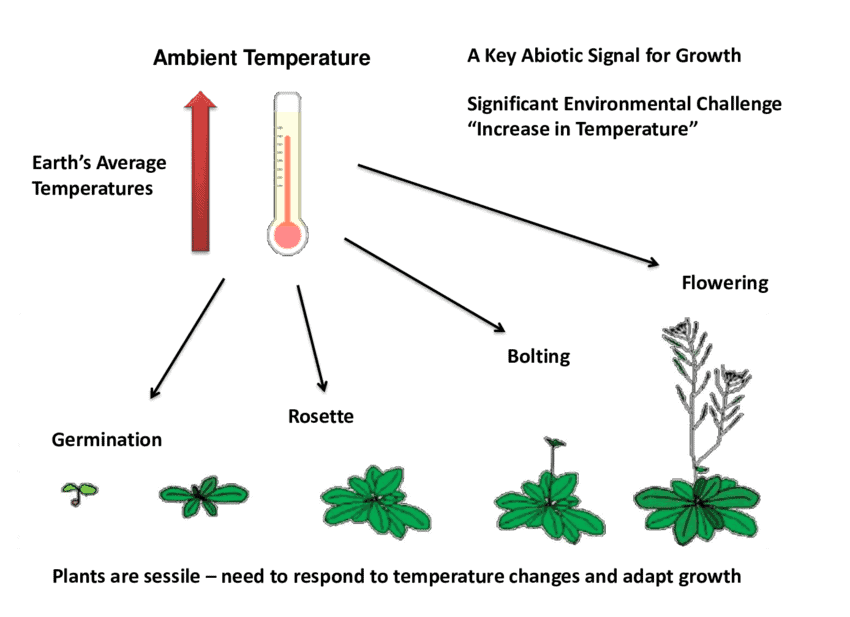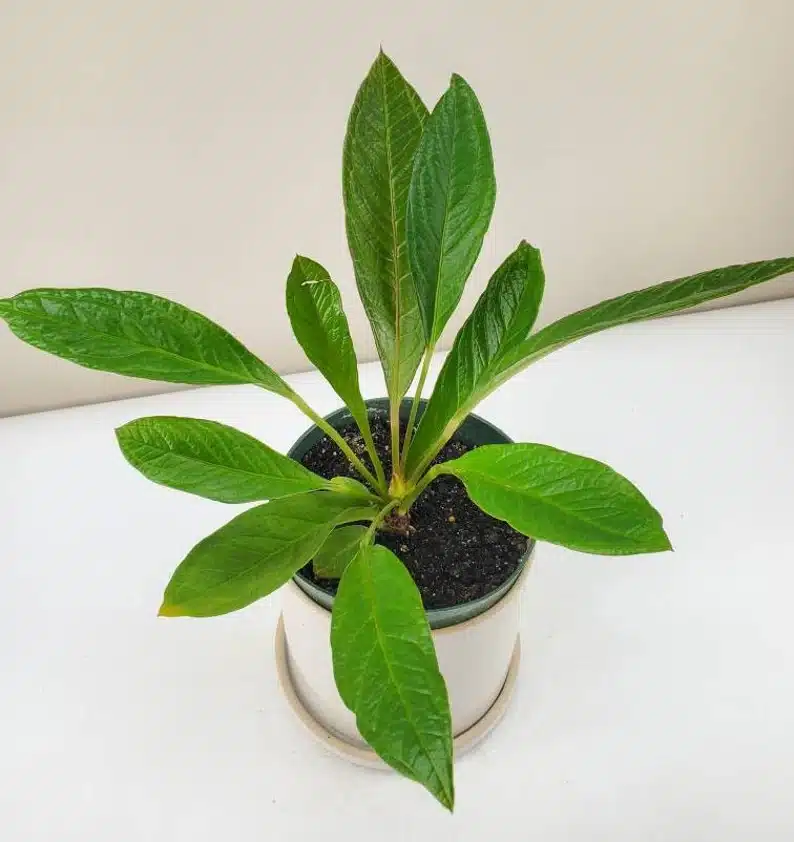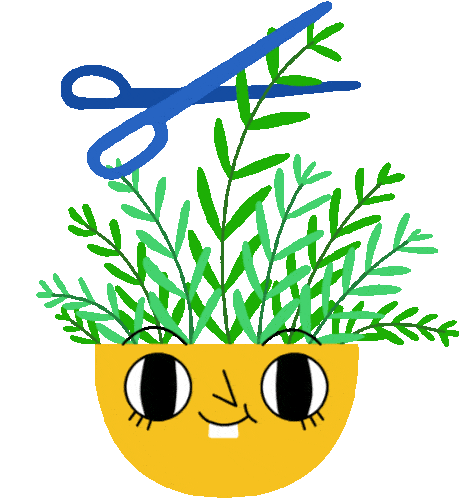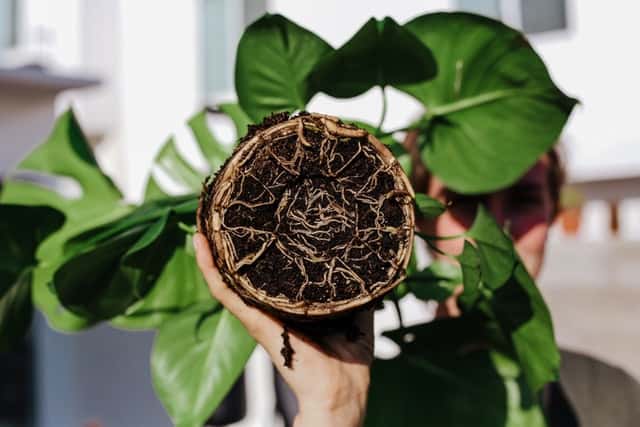Anthurium Cobra has an irresistible pull within them that is both exquisite and exotic.
They are as attractive as any other tropical houseplants, but those gigantic leaves and neon blossoms have a boldness to them that is very hard to ignore and dismiss.
Anthurium Cobra prefers bright-indirect light exposure, a 75-89°F temperature range, more than 50% humidity, and a highly organic and porous potting mix. Hydrate the plant when the top 2″ of potting soil is dry and crumbly, and nourish the plant with phosphorus-based fertilizer in the actively growing season (spring and early summer).

The delightful species is vigorous, incredibly strong, and leafy, which is excellent for workplaces. A stunningly lovely plant that may just be left in the shade without demanding too much attention!
These natural creatures can be managed and made into attractive ornaments for the residence with even a little maintenance.
While Anthurium Cobra’s upkeep differs from typical houseplants, these species can thrive in any ordinary home environment with a few tweaks.
Just make sure to fulfill the basic need, which I will be explaining throughout the article. Just sit tight.
Table of Contents
Anthurium Cobra Overview
Anthurium Cobra is a beautiful, rich green foliage with a striking emphasis.
The origins of the species can be traced back to the warm and damp forests of tropical regions. The Anthurium Cobra comes from tropical South America.
It is a member of the arum family (Araceae).
The variety is part of a tropical plant family that includes approximately 600 species. These Anthurium are epiphytic in the natural habitat and flourishes on other plants rather than soil.
A more detail overview is explained in the table below:
| Common Name | Anthurium Cobra |
| Botanical Name | Anthurium bonplandii subsp. |
| Family | Araceae |
| Origin | South America |
| Plant Type | Herbaceous perennial |
| Hardiness Zone | USDA 11 to 12 |
| Blooms | Once a year during Spring |
| Growth Rate | Slow Grower Can get up to 5ft tall |
| Toxicity | Toxic to pets and humans |
Anthurium Cobra Care Hacks
Anthurium Cobra grows slowly or moderately, relying on how much light they get without becoming scorched.
Here is more stuff you might want to consider while caring for your Anthurium Cobra.
| Factors | Favorable Parameters |
|---|---|
| Water requirement | Medium: Allow the top two inches of soil to dry between thorough waterings |
| Temperature requirement | 65°F-85°F |
| Light requirement | Bright indirect light |
| Fertilizer | Slow feeders; Liquid NPK works best for the summer months |
| Soil Type | Highly organic and porous potting mix Slightly Acidic |
| Humidity | More than 50% |
| Propagation | Root division Via seeds Stem Cuttings |
| Pruning | Once a year in the autumn season |
| Re-potting | When the plant is root-bound |
1. Sunlight and Location
Anthurium Cobras can take all intensities of indirect light, but those placed in low-light conditions produce fewer blossoms and grow more slowly.
On the other hand, direct sunlight will toast the leaves of these species.
Thus, they should be developed in bright, indirect light. So, put your plant in a room with plenty of indirect light.
A north-facing window works like magic! Anthurium Cobra love at least 3-5 hours of filtered light. And, if you are positioning them outdoors, a shaded balcony works best.

However, if your apartment does not have that many windows, you can use grow lights.
Grow lights are as good as natural lights in terms of plant care. Also, you have complete control over how much and for how long your plant is receiving the light.
Signs and Symptoms of Improper Lightning
- Their foliage will burn and fade if exposed to direct sunlight for an extended period.
- The leaves will shrink and acquire pale yellow and brown patches.
- If the light is not enough, the plant will have stunted growth, and the leaves will appear much smaller in size. The overall appearance of the plant will be compromised.
2. Minimal Water Requirement
Anthurium Cobras have a minimal water requirement. The most reasonable practice is to let the soil dry up slightly between watering.
Allowing the soil to become too damp might cause the foliage to turn yellow and raise the risk of root rot.
Generally, indoor planters inform that they water their Anthurium Cobra once a week if kept indoors and twice if maintained outdoors.
However, it is best not to stick with a schedule when watering Anthurium Cobra.

Check the topsoil with your finger. If the top two inches feel dry, go ahead and water the plant. If not, wait for a few days.
Make sure you reduce the water frequency in winter seasons compared to summertime.
Also, try to use lukewarm rain or distilled water. Tap water works fine, but you need to steady it for a few hours until the chemical settles in the bottom.
How to Treat Overwatered Plants?
- Place the plant in a slightly warmer (but not scorching) location.
- Stop watering for a few days.
- If the soil is excessively wet, you might want to change the potting soil.
How to Treat Under-watered Plants?
- Go ahead and give it a good amount of water immediately.
- Make sure that the water is running out through the drainage holes.
- Check your plant every day for a week and hydrate as necessary.
3. Ideal Temperature
Anthurium Cobra is native to the tropics; thus, it thrives in temperatures ranging from 65°F to 80°F throughout the day.
Night temperatures, on the other hand, should be around 60°F-75°F. Any temperature lower than this may cause your plant’s development to be stunted, resulting in leaf damage.

Throughout the winter, Anthurium Cobra will not sustain outdoors in non-tropical regions.
If your plant spends the winter outdoors, bring it inside as soon as the temperature goes below 60 degrees Fahrenheit.
Your Anthurium Cobra will require a bright window and temperatures about 75 degrees Fahrenheit even in cold seasons.
Symptoms of Unfavorable Temperatures
- Plant tissues that have been injured by frost or heat lose their stiffness, resulting in sagging or curled-up foliage.
- The darkening of foliage is another symptom if your Anthurium Cobra is too cold or warm.
- Foliage may have yellow or brown staining or even appear scorched in some areas.
If you wish to shower a little love for your plant during the cold winters, you may also use artificial heating. Heating pad is loved by many plant-parent!
Keep the plant away from air conditioning since it might dired up the air around the plant’s surroundings.
4. Higher than Normal Humidity
Anthuriums Cobras require 50% or greater humidity levels, which are substantially higher than standard living space.
Anything less could damage the health and appearance of your beloved plant companions!
Tips for Maintaining the Ideal Humidity Levels
- Place the potted Anthurium Cobra on a platter of dampened rocks to enhance humidity around it.
- The best strategy for increasing humidity is misting.
Spray the foliage of your Anthurium Cobra with a plant mister now and then to give them the impression that the humidity in your property is higher.

Make sure the mist isn’t too powerful. As a result,utilize a plant mister instead of using a plant sprayer.
- Or, invest in a good humidifier!
- Grouping is another humidity-increasing method but be aware of the pest and disease infestation it might invite.
5. Mildy Acidic Soil Mix
When it concerns Anthurium Cobra upkeep, various potting formulations heavy in organic matter will suffice; however, it requires adequate drainage to allow water to leave and minimize root rot.
The pH of the soil should be slightly acidic, between 5.5 and 6.5.
Anthurium Cobra thrives in soil explicitly designed for epiphytes as they are frequently porous and rich.
Because coarse sand and perlite assist water removal quickly, the dirt can be a mixture of the two. You can even use the orchid blend.
DIY Soil Mix for Anthurium Cobra
Incorporate pine wood, cocopeat, and perlite to make your own healthy and well-draining Anthurium Cobra’s nutrient substrate from scratch.
You can use three parts orchid soil, two-part cocopeat, and one part perlite for your Anthurium Cobra. Mix all of the components in a big container.

Then, add a tiny amount of water to the binding of all the ingredients. Nevertheless, don’t add so much water that the mixture turns mushy.
Here are a few fantastic commercially available potting mixes for your beloved Antherium Cobra:
- Anthurium Plant Potting Soil Mix (8 Quarts)
- rePotme Houseplant and Tropical Classic Potting Soil Mix – Mini Bag
- Miracle-Gro Indoor Potting Mix 6 qt., Grows beautiful Houseplants
6. Rare Fertilization
If you maintain your Anthurium Cobra in a store-bought potting medium, it should be able to survive for a year without additional nutrients.
Anthurium Cobras don’t need a lot of fertilization to thrive. Fertilizer enough for them is incorporated into almost all industrially sold garden soil.
However, once your plant has been sitting in the same pot for some time, you should consider replenishing its nutrition.
Once every four months, you should nourish the plant with one-quarter of liquid plant food or fertilizer.

It is absolutely not necessary to supplement the plant’s nourishment while not actively developing.
Supplying more fertilizers than the roots can handle can actually harm the roots. Thus, only fertilize in the spring and summer.
Symptoms of Nutrition Deficiency in Anthurium Cobra
- Nutritional shortage in Anthuriums Cobra is difficult to detect; typically, the only sign is that the plant isn’t developing or blossoming as much throughout the hotter months.
Protip- Use a nutrient solution with a higher phosphorus content to produce the best flowers.
- Your Anthurium Cobra’s foliage may also turn yellow and withered, which could indicate starvation.
The nutritional balance is the first consideration when choosing a fertilizer.
You want something with a proportion of about 1:2:1 or 15-30-15, which is also a popular pick. Seek for anything that doesn’t have a lot of urea in it.
Also, make sure to dilute this with water before incorporating it into the plant pot.
Protip- Compost makes an excellent substitute for synthetic fertilizers. Hence, how about decomposing your leftovers and veggies?
Here are some great fertilizers for your Anthurium Cobra:
- Florikan Timed Release Fertilizer. Excellent for Orchids, Anthuriums, Philodendrons
- Grow More 7415 Super Bloomer 15-30-15, 3-Pound
- RAW- Phosphorus Plant Nutrient for Fruiting and Flowering
7. Features and Growth Rate
Anthurium Cobra is a terrestrial plant that also grows as an epiphyte on colossal tree trunks.
They grow slowly to moderately and can reach a length of 2 feet in a single growing season.
They are distinguished by their leaf blades, which are generally enormous and often broad, as well as their robust leathery foliage.

Dark secretory spots are visible on the lower leaf surface of this variety. The young foliages are reddish on the lower surface and darken with maturity.
The flowers on the plant are long-lasting, surviving up to six weeks. The blooms are produced once a year during the spring season.
However, the major attraction of the plant is the long leathery foliage.
The plant can get up to 5 feet tall depending on growing conditions. However, it barely gets above 2 feet in a regular indoor setting.
8. Potting and Repotting
It is appropriate to re-pot an Anthurium Cobra when it floods its pot with roots and sends out many aerial roots. You will generally encounter such circumstances once every two years.
While re-potting, make sure to transplant the plant to a container only 2 inches larger than the original one.
Early spring to summer is the perfect opportunity to re-pot your lovely plant kids.
Make sure you strictly avoid re-potting in the wintertime as it is the dormant period for plants. Winter re-pot is only going to make your Anthurium Cobra sick and frail!

Choose a pot dependent on how often you water your plants. Overwaterers should use a terracotta pot with a hole in the bottom that allows the water to drain.
Employ plastic or ceramic pots to keep moisture in your plants if you have a habit of forgetting or delaying the water routine.
You will need a planter with several drainage holes regardless of your watering preferences.
How to Re-pot?
- Load the new bigger container with about 1/3 potting mix.
- Then place the Anthurium Cobra on top of the soil.
- Gently pour the remaining soil around the foundation, up to the depth the plant covered in its former container.
- Over the next few days, as new air roots emerge just above the dirt, carefully pack more peat moss around the bare roots.
Things to Keep in Mind after Re-potting
In the days after your re-potting, pay special attention to your plants’ requirements. A thriving plant has a considerably better chance of surviving the re-potting procedures.
- Keep your Anthurium Cobra in a shady location to prevent dehydration wilting.
- To avoid withering, make sure to maintain a healthy watering habit.
- Do not build a consistent watering schedule. Instead, inspect your plants’ substrate and leaves daily for signs that they have to be hydrated.
- Keep an eye on the temperature surrounding your plants to ensure it is just right. I keep track of the current, average, and lowest temperatures with a digital thermometer.
- To keep your plant from drooping and dying after re-potting, don’t fertilize it for at least 2-3 weeks. Plants are stressed by re-potting and quick input of nutritional salts.
9. Pruning: Early to Late Summer
If your Anthurium Cobra has dead or drooping foliage, it devotes all of its effort to reviving them.
By eliminating the browning foliage, you can aid your plant in expanding its resources by producing new foliage and blossoms.
Prune them using hand trimmers if they are challenging to extract with bare hands.
Make sure only to prune your Anthurium Cobra early to late summer, and do not wait for the frigid weather.

Chop withered blooms off at the ground to get rid of them. If you want the plant to generate seeds, only keep a few faded flowers for an extended period.
Please take a while to trim your Anthurium Cobra and snip off any stray leaves or stems that make it appear unbalanced.
However, discard only a few leaves at a time, not more than 4-5 leaves for a tiny potted plant.
10. Yes! It is Toxic
Anthurium Cobra is toxic to both humans and animals.
The plant tissue comprises needle-like crystals of insoluble Calcium Oxalate that irritate when they penetrate the skin and mouth.
Furthermore, the plants produce proteolytic enzymes that emit histamine and kinins, resulting in swelling, stinging, and blistering.
Infected animals may shiver, claw, scratch their faces and mouths, drool, froth, demand water, or show signs of edema.

Oral edema in seriously affected animals can make swallowing and respiration difficult.
You will get a terrible stinging sensation in your mouth if you swallow the plant parts. Blisters and swelling inside your mouth are other possible side effects.
Get in touch with
- In case of poisoning in Children- American Association of Poison Control Center at (800) 222-1222
- For pet poisoning- ASPCA Poison Center at (800) 426-4435.
Also Watch,
Propagation Methods for Anthurium Cobra
Some claim that Anthurium Cobra propagation is famously challenging, which explains why this plant is valued so highly valued.
1. Propagation from Root Division
Regardless of popular misconceptions, the real kicker is that dividing Anthurium Cobra root is simple. If your plant grows to be quite enormous, you will be thankful you did it.

Splitting it into smaller sections will hold all of the plants fresher and encourage additional blooming. This is particularly true for root-bound ones!
Steps for Root Division
The day before you split and propagate the plant, give it plenty of water. Anthurium Cobras are hardy plants, but this technique takes a toll on their roots.
- Flip the pot upside down and grab your Anthurium Cobra by the bottom of the stems to pull the plant free.
- It may be necessary to press the bottom of the container gently to loosen it if it is heavily rootbound.
- Remove any dirt that has adhered to the roots, washing it if required.
- Determine the region on your Anthurium Cobra where you want to split it. Take one-half of the plant in each palm and slowly peel it apart.
- Clip or pluck off any dead or injured foliage, and if the roots are very lengthy, clip them back.
- Fill the new pots halfway with potting medium, with a good foundation layer.
- Insert the plantlets into different pots and pat them down with fresh soil. Dampen them and set them aside in a shaded spot.
2. Propagation from Seeds
Anthurium Cobras can also be grown from seed, but it can take up to four years for blossoms to appear, which may deter those wishing for a beautiful plant.
Steps to Seed Propagation
In any case, if you ever come across some Anthurium Cobra seeds, here is how you can propagate them successfully:
- The seed prefers damp cocopeat as a growing medium. Also, it is best if you soak the seeds overnight!
- At an inch interval, gently push the seed into the cocopeat.
- Envelope the propagation tray with a clear plastic bag to hasten germination.

- Position the planter near a window that does not receive direct sunlight.
- If the moisture in the plastic beads up, lift one flap to let some air through as the plant needs oxygen.
- If you observe new shoots, peel back and remove the plastic bag.
Care after Propagation
- Hold your freshly propagated Anthurium Cobras away from direct sunlight in a humid and warm environment.
- If the atmosphere in your household is dry, spritz the plantlets often with a spray bottle.
- Wrap small and fragile plants with a transparent bowl or a baggie to keep moisture locked within.
3. Propagate from Stem Cutting
It is the easiest and fast method of propagation.
Steps for Stem Cutting
With these steps, it should be as simple as making a cup of tea.
- Take out the healthy stem with nodes. Finding aerial roots would be better.
- Sterilized pruning shears first and just below the nodes make an incision.
Note- Take cuttings as much as you like, hust make sure that each of them has at least one node.
- Leave the cuttings till you see a callous formed. You can also spray some rooting hormones in the cuttings.
- In order to prevent root rot try dusting them with cinnamon powder.
- Now plant them directly in the soil or try rooting them in water.
Generally, your Anthurium Cobra’s stem will start rooting within a month or two.
Also Watch,
Common Problems with Anthurium Cobra
Although the Anthurium Cobra plant is elementary to handle and maintain, it is susceptible to several problems. Below are some of the issues you could encounter with Anthurium Cobras.
1. Curling Leaf Tips
The problem with curling leaf tips could be a shortage of water, and the easiest way to fix it is to hydrate your Anthurium Cobras regularly.
You can begin by thoroughly saturating them and work your way to reach an equilibrium.
2. Brown Spots on the Leaves
Brown patches on the foliage could indicate too much natural light or a lack of nutrition.
To figure out what’s causing the problem, transfer your Anthurium Cobra to a less-lit area. We suggest using a watered fertilizer if it does not fix the issue.
3. Pests Infestation
Sucking bugs find Anthurium Cobras’ squishy leaves alluring.
These nefarious creatures penetrate the foliage and stem to consume the nutritious juices inside the plant. Additionally, they have a propensity for reproducing swiftly.

A slew of pests doesn’t plague anthurium Cobras; however, mealybugs, fungus gnats, and spider mites prey on the plant.
| Pests | Symptoms | Treatment |
|---|---|---|
| Mealybugs | Pale and fuzzy structures are often observed in flowers, stem joints, and young leaves. | Use a cotton ball and rubbing alcohol to extract the bug manually. |
| Fungus gnat | Small dark-colored flies, often white. | Apple cider vinegar spray or a fungicide helps naturally get rid of the gnats. |
| Spider mites | Light yellow or brown patches on the top side of the mature leaf. | Use dish wash to clean the plant and eliminate the bugs. |
Protip- It is always best to use an insecticidal soap spray when you suspect any extensive bug infestation. However, for a minor infestation, horticultural neem oil works just fine.
4. Disease Infestation
The following are the most common diseases in Anthurium Cobra:
Bacterial Blight
Causal Agent: Xanthomonas axonopodis pv. Dieffenbachiae
Anthurium Cobras are infected by bacteria that enter through apertures along the leaf edges.
These bacteria may also penetrate if leaf cells become damaged through cutting or bugs pierce leaf tissues. Pathogens can get in through injuries when blossoms are picked.
Symptoms: The disease’s earliest obvious signs are yellow, water-soaked blemishes along the leaf margins that quickly expand into deadly V-shaped patches.
Solution Measures
- Bacteria can spread over moist areas, so keeping the leaves dry when watering is essential.
- Before pruning or propagating, sanitize knives and shears by soaking them in an antibacterial solvent.
Bacterial Wilt
Causal Agent: Ralstonia solanacearum
Affected cuttings distribute the bacterial wilt culprit quickly. Because bacteria thrive in soil, compromised plant material and underlying soil are responsible for the agent’s spread.
Symptoms: The first sign to appear is typically leaf yellowing. The infection spreads across the plant’s vascular system, leaving the veins in the stems and a brownish golden hue.

Solution Measures
- Phosphoric acid-based fungicides have also been beneficial in avoiding infection.
- Bacterial wilt is disseminated through contaminated soil, water, equipment, or humans. Thus, make sure your propagation equipment is disease-free.
Fungal Diseases
Causal Agent: Rhizoctonia solani
Sclerotia are tiny mats of finely bound mycelia produced by the fungus. Sclerotia have an uneven structure, are brown, and appear like sand granules.
Symptoms: Delicate, vulnerable stems get girdled, water-logged, and therefore unable to hold the plant’s load.
Solution Measures
- Garden soil should never be added to medium mixtures without being steam sterilized.
- Use soil combinations that are well-drained.
- Peat moss, sphagnum moss, cocopeat, and potting media mixtures should never be stored directly on soil surfaces where the fungus can infiltrate them.
- Use a powerful fungicide if the infection is severe.
FAQs about Anthurium Cobra
Is it Easy to Care for Anthurium Cobra?
They are finest as an indoor plant, and while they can be challenging at first, the lovely flowers make them worthwhile.
What are the Benefits of Anthurium Cobra Plants?
According to NASA, one of the most prominent advantages of having Anthurium Cobra plants in your residence is filtering contaminants from the atmosphere.
It can help eliminate ammonia, formaldehyde, xylene, and toluene.
Conclusion
It is not difficult to care for Anthuriums Cobra. Watering is very straightforward once the plant is in the proper soil medium and placement.
They are a must-have for any potted plant hoarder and an excellent choice for those who have perfected a variety of other indoor plants and are hunting for a decent challenge.
So, will you be purchasing the Anthurium Cobra as your next magnificent plant baby?
There are many Anthurium varieties; some might interest you. Here is a complete grow and care guide for a few of Anthurium: Wendlingeri, Angamarcanum, Pedatum, Clarinervium, and Anthurium Fingers.
